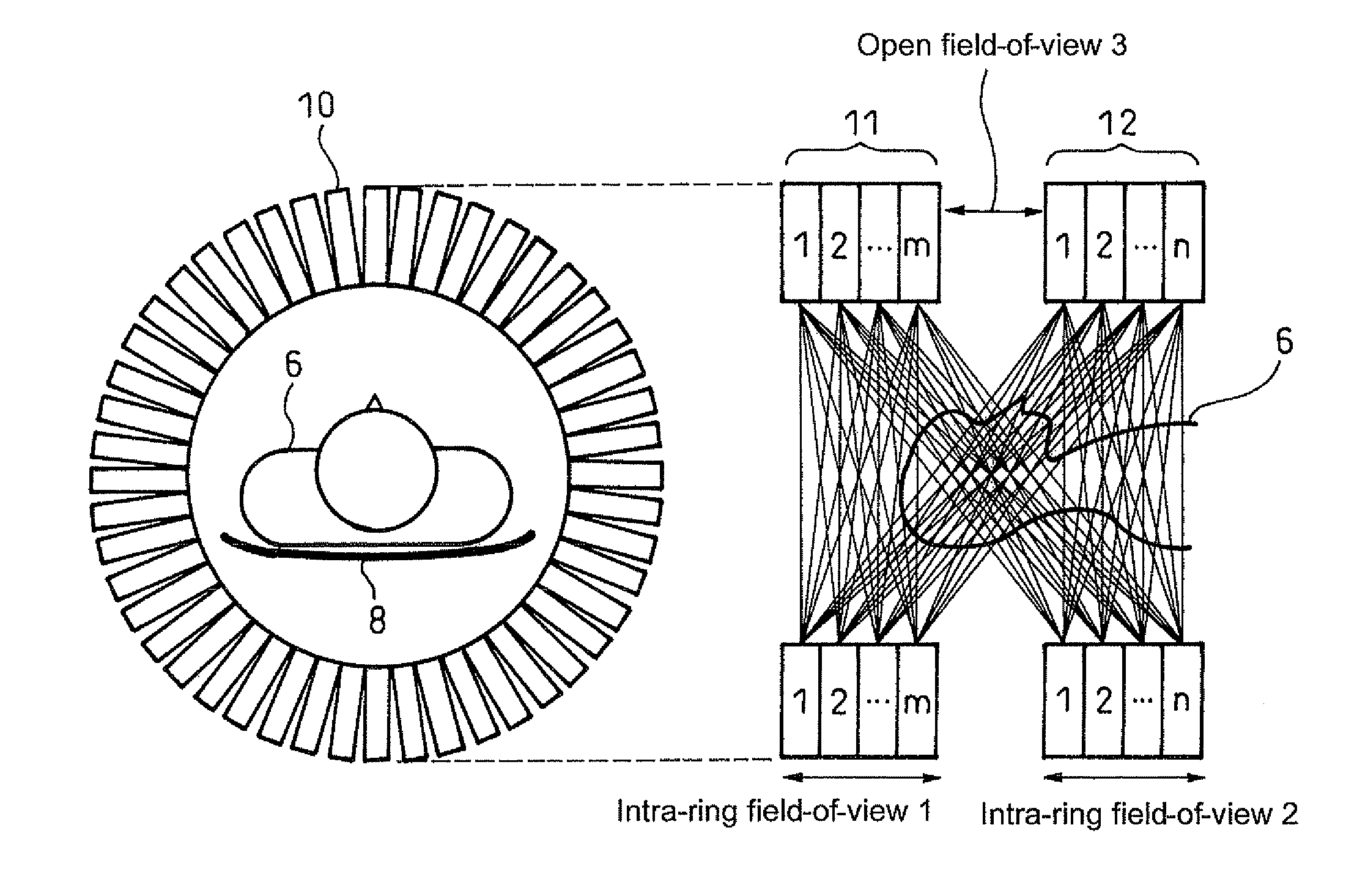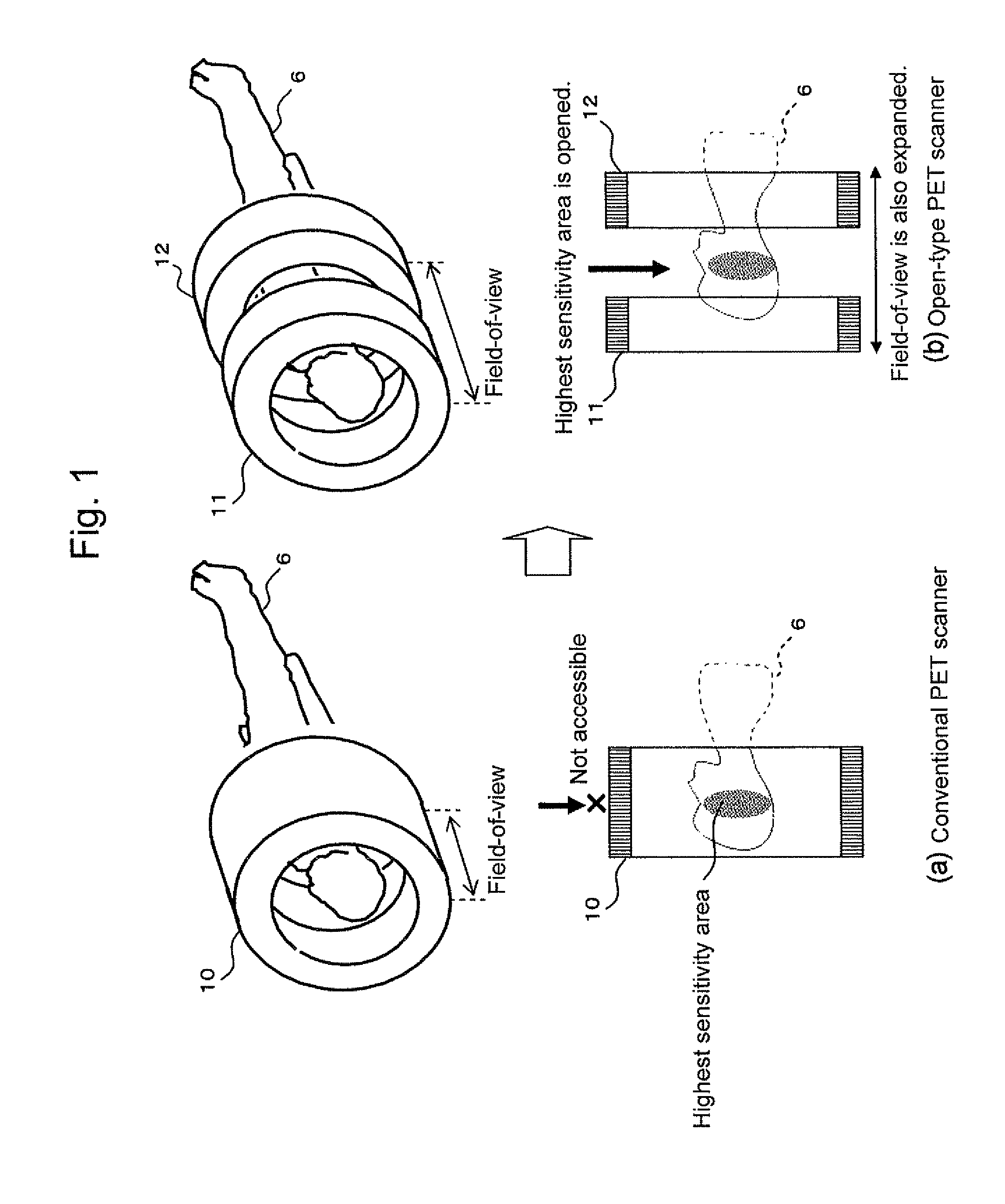Combined radiation therapy/pet apparatus
a combined radiation therapy and pet technology, applied in the field of combined radiation therapy/pet apparatus, can solve the problems of difficult positioning of tumors, change in tumor size, and inability to provide sufficient contrast between tumors and normal tissue, so as to reduce non-uniform sensitivity, suppress local sensitivity drops, and emphasize local sensitivity drops
- Summary
- Abstract
- Description
- Claims
- Application Information
AI Technical Summary
Benefits of technology
Problems solved by technology
Method used
Image
Examples
first embodiment
[0057]FIG. 6 shows the configuration of a Two identical ring-shaped detector rings 12a and 12b are arranged in parallel as independent gantries (60a, 60b), and a radiation irradiation device 24 is interposed between the detector rings 12a and 12b. This implements the treatment monitoring of observing the same area at the same time as treatment by PET. While the positions of the detector rings 12a and 12b may be fixed with respect to a bed 8 and the irradiation device 24, the detector rings here are configured to form a variable gap therebetween.
[0058]Specifically, the embodiment includes the detector rings 12a and 12b, gantry covers 60a and 60b which cover the respective detector rings, and the bed 8 on which a patient 6 lies. The gantries are each equipped with wheels 62, and have the function of moving back and forth on common or different rails 64.
[0059]To shift the open field-of-view in the direction of the body axis, the detector rings 12a and 12b are moved with respect to the...
third embodiment
[0072]FIG. 14 shows a third embodiment where the detectors are separated farther from the irradiation field in order to avoid a detector effect.
[0073]For chest treatment and the like, respiratory and other movements of the affected area need to be taken into account. Specifically, the treatment plan is created so as to administer irradiations in a relatively stable phase of breathing such as the expiratory state in the respiratory cycles. In treatment, respiration monitoring is performed to detect the motion of a marker or the like attached to the chest, and irradiation is administered only when the respiratory phase coincides with that on the treatment plan.
[0074]FIG. 15 shows the control of turning ON the irradiation depending on the expiratory phase of the respiratory signal. Here, PET measurement can be performed at the timing when the irradiation is OFF (inspiratory phase). This allows efficient PET measurement in the middle of a series of irradiations.
[0075]FIG. 15 is predicat...
PUM
 Login to View More
Login to View More Abstract
Description
Claims
Application Information
 Login to View More
Login to View More - R&D
- Intellectual Property
- Life Sciences
- Materials
- Tech Scout
- Unparalleled Data Quality
- Higher Quality Content
- 60% Fewer Hallucinations
Browse by: Latest US Patents, China's latest patents, Technical Efficacy Thesaurus, Application Domain, Technology Topic, Popular Technical Reports.
© 2025 PatSnap. All rights reserved.Legal|Privacy policy|Modern Slavery Act Transparency Statement|Sitemap|About US| Contact US: help@patsnap.com



